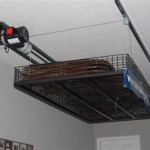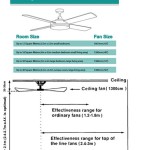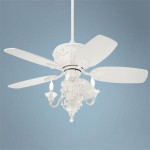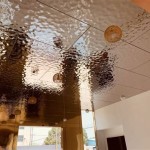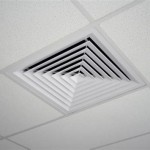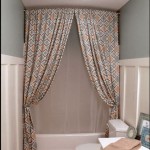What Is A Double Tray Ceiling Fan?
A double tray ceiling fan is a type of ceiling fan installation designed for rooms with double tray ceilings. A tray ceiling, also referred to as an inverted or recessed ceiling, features a central area that is higher than the surrounding perimeter, creating a tiered effect. A double tray ceiling takes this a step further, incorporating two such recessed tiers, adding depth and visual interest to the room. Integrating a ceiling fan into this architectural feature presents unique considerations related to aesthetics, functionality, and installation. Understanding these considerations is crucial for homeowners and designers looking to optimize both the look and performance of their spaces.
Unlike installing a ceiling fan on a standard flat ceiling, a double tray ceiling requires careful planning. The fan not only needs to be appropriately sized for the room's dimensions but also must be positioned to effectively circulate air despite the tiered structure. Moreover, the hanging hardware, downrod length, and overall fan design must complement the existing ceiling architecture, contributing to a cohesive and balanced aesthetic. The resulting effect, when executed correctly, is a sophisticated and functional enhancement that elevates the entire room.
Furthermore, the electrical considerations are paramount. Proper wiring and a robust mounting system are essential to ensure the safe and reliable operation of the ceiling fan. The added complexity of a double tray ceiling necessitates a thorough understanding of building codes and best practices for electrical installations. Therefore, professional installation is often recommended to mitigate potential issues and ensure compliance with safety standards.
Key Point 1: Understanding the Components and Design Considerations
A double tray ceiling fan setup is more than just a fan attached to a ceiling. It involves several critical components that must work together seamlessly. These include the fan itself, the downrod, the mounting bracket, and the electrical wiring. The selection of each component should be carefully considered in relation to the existing architectural design of the double tray ceiling.
The fan's size is a primary consideration. An undersized fan will struggle to circulate air effectively in a larger room, while an oversized fan can be visually overwhelming and create excessive noise. Generally, the square footage of the room determines the appropriate fan blade span. Online resources and fan manufacturers provide guidelines for matching fan size to room dimensions. Furthermore, the style of the fan should complement the room’s overall aesthetic. Options range from traditional to modern, including models with integrated lighting or unique blade designs.
The downrod is the extension pole connecting the fan motor to the mounting bracket. Its length is crucial for achieving optimal airflow. In a double tray ceiling, the goal is to position the fan blades at the correct height for effective circulation while also maintaining visual harmony with the ceiling tiers. A downrod that is too short can cause the fan to appear cramped and ineffective, while one that is too long can make the fan appear disproportionate and obstruct views. Calculating the ideal downrod length involves measuring the distance from the ceiling to the desired blade height, considering the height of the ceiling tiers. Aiming for a blade height of approximately 8 to 9 feet above the floor is a common guideline.
The mounting bracket is the point of connection between the fan and the ceiling's electrical box. It must be robust enough to support the weight and vibrations of the fan. For double tray ceilings, specialized mounting brackets may be required to accommodate the specific structural configuration. These brackets are designed to securely attach to the ceiling joists or support beams, ensuring that the fan remains stable and safe throughout its operation. It is crucial to select a bracket that is rated for the weight of the fan and that is compatible with the type of ceiling construction.
Electrical wiring is another critical aspect. The fan must be connected to a dedicated electrical circuit that can handle its power requirements. It is essential to follow all applicable electrical codes and safety regulations when wiring the fan. If you are not comfortable working with electrical wiring, it is best to hire a qualified electrician to perform the installation. This will ensure that the wiring is done correctly and that the fan operates safely and reliably.
Key Point 2: Installation Challenges and Solutions
Installing a ceiling fan in a double tray ceiling presents several unique challenges compared to a standard ceiling installation. These challenges often stem from the complex structure of the ceiling itself, which can make it difficult to access the electrical wiring and securely mount the fan. Understanding these challenges and implementing appropriate solutions is critical for a successful installation.
One common challenge is the limited accessibility to the electrical box. The recessed tiers of the double tray ceiling can make it difficult to reach the electrical box and connect the fan's wiring. In some cases, it may be necessary to extend the wiring or install a junction box to provide easier access. This should be done carefully and in accordance with all applicable electrical codes.
Another challenge is the need for a longer downrod. As mentioned earlier, the downrod must be long enough to position the fan blades at the correct height for optimal airflow. However, a longer downrod can also increase the risk of the fan swaying or wobbling, especially if the mounting bracket is not properly secured. To mitigate this risk, it is essential to use a high-quality mounting bracket that is specifically designed for use with longer downrods. Additionally, the fan blades should be properly balanced to minimize vibrations.
Securing the mounting bracket to the ceiling can also be challenging. In some cases, the ceiling joists or support beams may not be located in the ideal位置 for mounting the fan. In this situation, it may be necessary to install additional support structures, such as blocking or bracing, to provide a secure mounting surface. This requires careful planning and execution to ensure that the fan is properly supported and that the ceiling is not damaged.
Furthermore, the weight of the fan can be a concern, especially for older homes with weaker ceiling structures. It is essential to ensure that the ceiling can safely support the weight of the fan before proceeding with the installation. If there is any doubt about the ceiling's load-bearing capacity, it is best to consult with a structural engineer or a qualified contractor.
Addressing these installation challenges requires a combination of careful planning, the right tools and materials, and a thorough understanding of building codes and best practices. In many cases, it is best to hire a professional electrician or contractor to perform the installation, especially if you are not comfortable working with electrical wiring or if the ceiling structure is complex.
Key Point 3: Aesthetic Considerations and Design Integration
Beyond the functional aspects, integrating a ceiling fan into a double tray ceiling requires careful attention to aesthetics. The goal is to select a fan that not only performs effectively but also complements the overall design of the room, enhancing its visual appeal. This involves considering the fan's style, finish, blade design, and lighting options.
The fan's style should align with the room's existing décor. For example, a traditional room might benefit from a fan with ornate details and a rich finish, while a modern room might call for a sleek, minimalist fan with clean lines. There are countless styles available, ranging from rustic to contemporary, so it is essential to choose a fan that reflects the room's overall design aesthetic.
The fan's finish is another important consideration. Common finishes include brushed nickel, oil-rubbed bronze, and white. The finish should complement the other hardware and fixtures in the room, such as door handles, light fixtures, and cabinet pulls. A consistent finish throughout the room will create a cohesive and polished look.
The blade design can also contribute to the fan's aesthetic appeal. Fan blades come in a variety of shapes, sizes, and materials. Some blades are simple and understated, while others are more decorative and eye-catching. The blade material can also affect the fan's overall look. For example, wooden blades can add warmth and texture to a room, while metal blades can create a more modern and industrial feel.
Lighting options are another important factor to consider. Many ceiling fans come with integrated lights, which can provide both ambient and task lighting. The style of the lights should complement the fan's overall design. For example, a traditional fan might have frosted glass shades, while a modern fan might have LED lights. The brightness and color temperature of the lights should also be considered to ensure that they provide adequate illumination for the room.
Furthermore, consider the scale of the fan in relation to the size of the room and the dimensions of the double tray ceiling. A fan that is too large can overwhelm the space, while a fan that is too small can get lost in the ceiling's architecture. It is essential to choose a fan that is appropriately sized for the room and that complements the ceiling's unique features.
Finally, consider the fan's control system. Some fans come with simple pull chains, while others have remote controls or wall-mounted controls. A remote control can be particularly convenient, allowing you to adjust the fan speed and lighting from anywhere in the room. The control system should be easy to use and intuitive.
By carefully considering these aesthetic factors, you can select a ceiling fan that not only provides effective air circulation but also enhances the beauty and functionality of your double tray ceiling room.

Double Tray Ceiling

What You Need To Know About Tray Ceilings Jesse Steed Realtor

Double Trey Ceiling In Black And White With 2 Step Crown

All You Need To Know About Tray Ceilings Bob Vila

All You Need To Know About Tray Ceilings Conclusive 2024 Guide Afrohouseplans

The Ultimate Guide To Tray Ceilings Archways

Tray Ceiling Designs Modernize

Double Tray Ceilings With Recessed Lights In The Master Bedroom By Faynewhomes Via Flickr

Trey Ceiling Ideas To Level Up Any Room

Tray Ceiling Fan In Center
Related Posts



